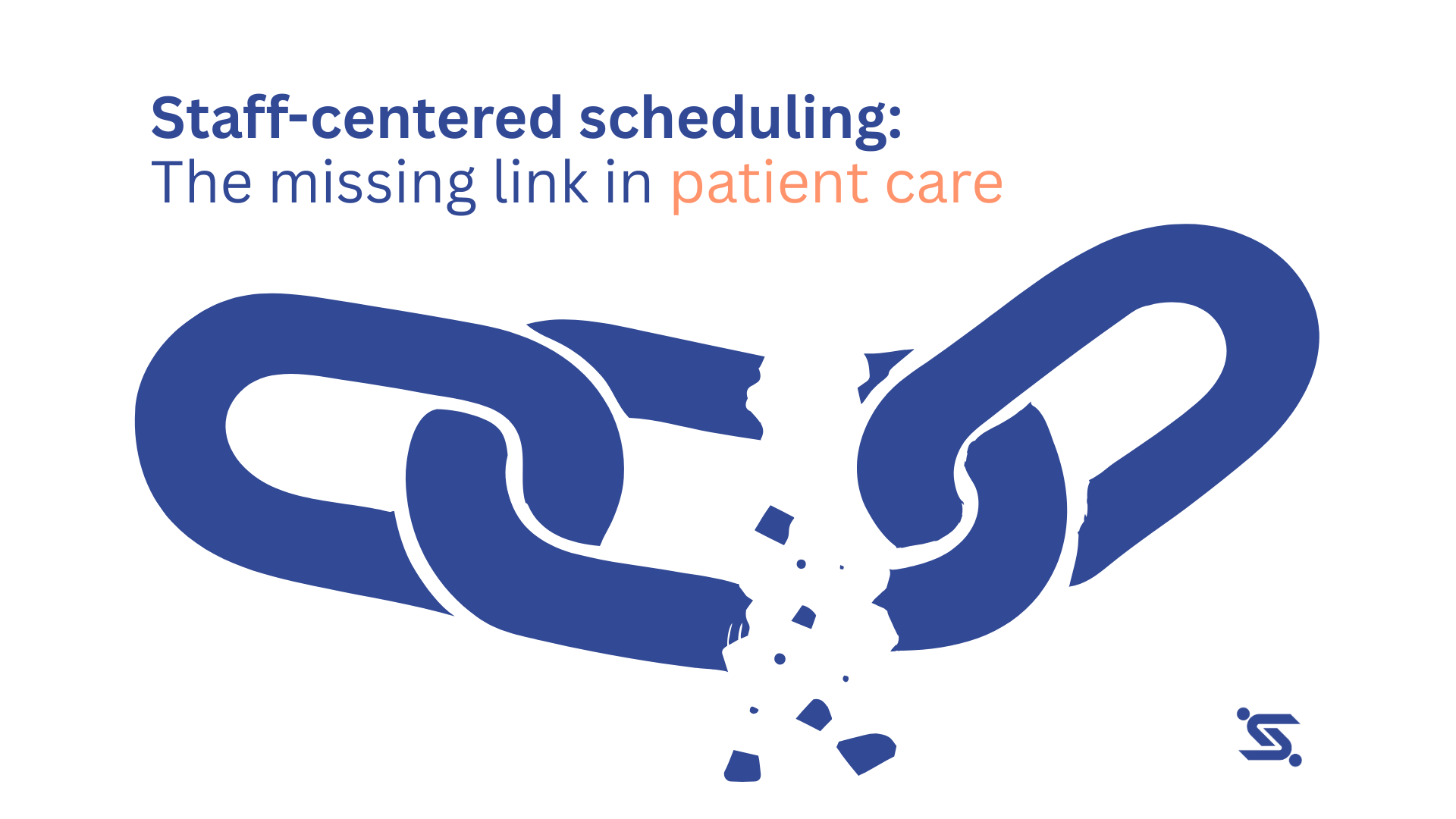Inadequate staffing coverage correlates with worse patient outcomes (1).
I’ve sat in countless boardrooms where the phrase “patient-centered care” gets repeated like a mantra. And it should. Patients are at the heart of everything we do in healthcare.
But here’s the truth we often avoid: you can’t have patient-centered care without staff-centered scheduling.
I’ve seen too many nurses finish a night shift, only to be called back for another one a few hours later. I’ve seen HR leaders fighting spreadsheets at 10 p.m., desperate to fill last-minute absences. And I’ve seen frontline teams—brilliant, compassionate people—burn out not because they can’t do the work, but because the system around them is broken.
The blind spot we don’t talk about
We invest in technology for diagnostics, for patient portals, for billing. But when it comes to scheduling—the foundation of how care actually gets delivered—we’re still relying on outdated tools, manual workarounds, and too much human sacrifice.
Every missed shift, every unfair rotation, every emergency callout has a cost. Not just in dollars, but in patient experience, staff morale, and trust.
This is the blind spot. We say patients first, but if the people caring for them are exhausted, disengaged, or constantly juggling inequitable schedules—patients feel it.
One director at a mid-sized acute care centre told me he finally “slept through the night” because ShiftLink meant he wasn’t waking up at 5 a.m. to handle unfilled shifts.
Over 75% of Canadian nurses are burned out (2).
Why staff-centered scheduling matters
When scheduling is fair, transparent, and flexible, three things happen:
- Staff feel respected. They know they won’t always be the ones stuck with nights or overtime.
- Burnout eases. People get back a sense of control over their lives.
- Patient care improves. Because teams show up rested, engaged, and focused on what matters.
In short: the patient experience is shaped long before a nurse walks into a room. It begins with the schedule.
We’ve seen this first-hand:
- At Deer Lodge Centre in Winnipeg, more than 22,000 shifts were posted in one year with an 87% fill rate—meaning units were staffed consistently and managers regained time for patient care rather than endless phone calls.
- At St. Boniface Hospital, time spent on callouts was cut by half. One HR leader shared that her team went from spending 75% of their day calling staff to just 25%—freeing up hours to focus on supporting staff.
- At Grace Hospital, what once required three full-time schedulers could suddenly be managed by one, saving an entire FTE and allowing resources to be reinvested in patient-facing work.
- And at St. Joseph’s Health Care London, staff adoption hit 95% within two weeks. Complaints about unfair callout processes dropped sharply, replaced with comments about how transparent and equitable the new system felt.
Here’s the difference: every hospital, every department, and every unit has its own reality. Critical care doesn’t look like food services, and mental health scheduling doesn’t look like surgical scheduling. That’s why ShiftLink’s AI-driven platform allows for customized schedules. No two sites should be forced into the same rigid mold. Why squeeze a square peg into a round hole when you can tailor the platform to fit your exact staffing needs?
These aren’t abstract benefits. They’re human ones.
What leaders need to rethink
If you’re a hospital leader, here’s the hard question: When was the last time you looked at your scheduling practices as a strategic lever for patient care?
Scheduling isn’t a clerical task. It’s workforce equity. It’s operational resilience. It’s the unseen hand that determines whether a unit runs with stress or with strength.
As leaders, we can’t just talk about resilience—we have to build it into the very systems that support our people.
One scheduler laughed that she thanked her manager for getting ShiftLink so many times it became a running joke: “Have I told you how much I love this system today?”
A call to shift
Patient-centered care will always be our goal. But to get there, we must honor the reality that staff-centered scheduling is not optional—it’s essential.
I’ll never forget meeting with a scheduling manager at an Ontario hospital. She told me she had seven staff responsible for scheduling more than 600 frontline employees. I asked how they were managing today, expecting to hear “Excel and phone calls.” Instead, she described using two large-scale scheduling platforms—neither of which could actually solve her day-to-day challenges.
I remember thinking: “Well then, why are you calling me?” But as she explained the gaps, it became clear. These dense platforms weren’t designed for the complexity of her environment. I asked her to walk me through what her team needed, then simply showed her how those exact features had been part of ShiftLink all along. Her eyes lit up. She said: “Let’s get a demo ASAP.”
I walked away both heartbroken and hopeful—heartbroken for her team and 600 staff who had been struggling for so long, but hopeful knowing we could once again simply make a difference for another great hospital team.
When we build schedules that are fair, transparent, and human, we create conditions where patients receive the care they deserve, and staff feel empowered to give it.
It’s time to make scheduling part of the strategic conversation. Not as an afterthought, but as a core part of how we lead.
Because in healthcare, patient care and staff care are two sides of the same coin.
Ref







